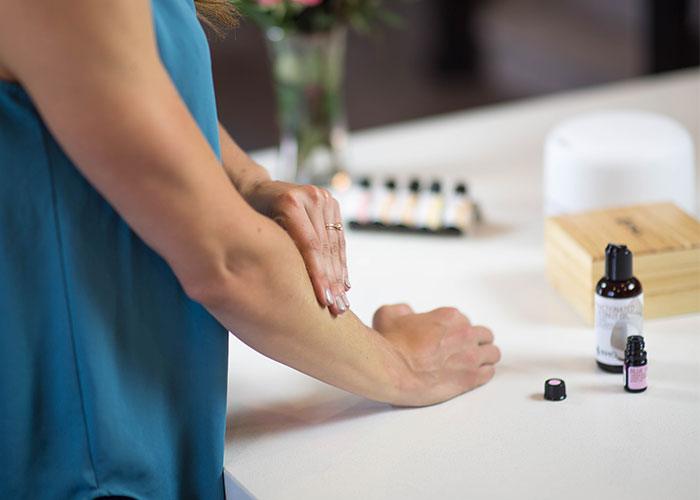Applying Essential Oils
Topical application is a very important, effective and safe way to use essential oils if the proper guidelines are followed. Applying essential oils to the skin can benefit an area of concern, a blemish and is also a great way to introduce the oils therapeutic properties into the bloodstream.
First..let's talk about dilution.
Topical application of an essential oil is done by adding essential oils to a carrier oil and spreading them onto the skin. This method serves two main purposes: to protect the skin from the potency of the oils and to allow a larger surface area to more effectively absorb the oils into the bloodstream. Dilution is key when applying oils topically. Essential oils are extremely potent, concentrated and volatile substances.
They do evaporate quickly and can potentially be harsh or damaging to the skin. A carrier oil is a vegetable, nut, or seed oil that "carries" the essential oil into the skin. Some examples of carrier oils are Fractionated Coconut, Jojoba, Almond or Grapeseed oil. Many carrier oils have therapeutic properties of their own. Dilution rates depend on your personal sensitivity, the type of oil you are using and the age of the person using the essential oil.
We do provide a great dilution chart on the website that we always suggest to follow. (Side note: Before applying any oil topically, we recommend conducting a patch test. To do so, simply apply one drop of your choice of essential oil to a small area of skin. If any irritation arises, this may indicate a possible sensitivity to the essential oil being used. In this case, you will want to add carrier oil on top of that area to calm down any irritation. )
Where should you apply your oils?
There are different areas of the body that can effectively absorb essential oils. If you are looking for quick absorption then the areas of the body where the skin is the thinnest would be ideal. These areas are:
- Crown of the skull (around the forehead and temples) for headache and tension relief
- Back and sides of the neck for immune support and tension relief
- Behind the ears to assist in relaxation and uplifting the mood
- Inside of the elbows and knees to absorb therapeutic properties
- Wrists and ankles to absorb therapeutic properties
- Chest and abdominal areas for digestive and respiratory support
You will find that the thicker skin is located on the palms of the hands and bottoms of the feet. This is where essential oils are commonly applied “neat” or undiluted as the absorption rate is very low. However, we do always suggest to dilute first to make sure that your skin can handle this type of application.
- Apply to the bottom of the feet for immune support
*If you are experiencing muscle soreness, simply apply to the area of concern. This would be the same for any skin imperfections or abnormalities.

